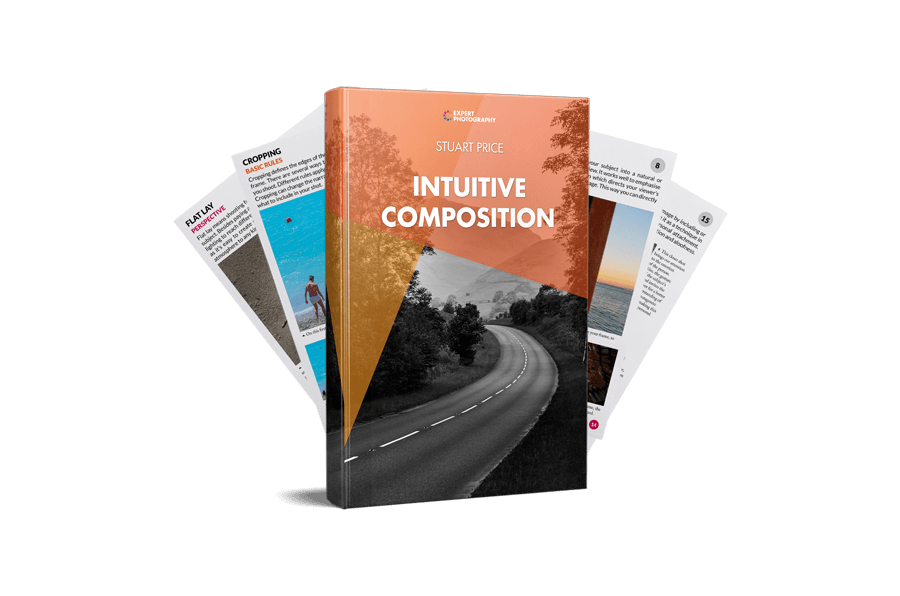Lead room is one of the many compositional techniques that artists of all types use. It’s also known as “nose room,” “look room,” and “leading space.”
The lead room principle in photography is a simple but essential part of compositional technique. It is used in portraiture, fashion, boudoir, event, and wedding photography.

Lead room is the negative space ahead of where the subject of an image is facing. By including this extra space within the frame, you allow room for your viewer’s eyes to travel. This gives the viewer context they have to piece together to understand the narrative.
You will also notice lead room in filmography. When a character is looking to the right, they are placed on the left side of the frame. This way, there is negative space on the right side of the frame.
In the case of moving objects, it’s best to create lead room in front of the object in the direction it is traveling. Otherwise, the object loses its sense of motion and direction in the image. Also, the negative space draws the viewer’s attention.

The lead room compositional technique is important to bear in mind, even if you are trying to break the rule to be creative. Altering the lead room has the potential to change the mood or feeling of an image.
It can add tension and make the scene feel uncomfortable. When you don’t leave enough space for the subject, it creates a frustrating feeling in the viewer.
Human beings tend to prefer to see that the subject is moving or looking somewhere. We don’t like it when a subject is too close to the frame without enough lead room. It creates a suffocating impression.
Because photography is a visual art, let’s look at some before and after photos of compositions with and without lead room.
Let’s look at the image comparison below. The first version is cropped and has no lead room in the direction the woman is facing. This gives the impression that the frame is too small. All these attributes create an image that feels strange and unappealing.
Now, let’s look at the second crap of the same photo. Thanks to the extra negative space, we don’t feel like the woman is squeezed into a tight frame. When you show the window in the composition, the lead room tells the viewer the subject is looking out of it.
By showing more details from the background, the image has more context and creates dynamism within the photo. The viewer’s attention is held for longer as they engage with the scene.
Let’s look at the next image of this red Lamborghini. It’s not uncommon to see images of cars from behind, but this angle looks strange.
The negative space behind the car makes it difficult for the viewer to connect with the car’s motion. The viewer will notice the motion blur in the background, but that feels disconnected from the car.
In the second version, the wider crop shows context within the picture. It’s more dynamic because the lead room shows the reader the sports car has a wide open road in front of it.
In the image below, the car is placed in a third of the frame, and there is plenty of lead room in front of the car. There is a clear difference from the cropped image above, and the viewer can now feel the car’s motion forward.
In the next image, we see a climber leaving the beach and climbing up. Because of the limited lead room, we don’t know what is in front of the climber. This takes away from the story you’re trying to tell.
Let’s compare this to the image that does have lead room. The lead room in front of the subject helps the viewer connect with where the subject is going and what awaits them on their journey.
The lead room principle is not a rule. Rather, it’s more of a guideline for good composition.
You can apply the lead room principle to living subjects, such as humans and animals. But it’s also perfect for objects in motion, such as motorbikes or cars.
Sometimes, you’ll find that including lead room takes attention away from the subject of the photo. But even if this is the case, it’s usually best to include more space in front of the person than behind them.
The easiest way to include lead room in your photos is to shoot a wider composition than you normally would. Leave negative space in your shots and crop them in post. You can always remove the extra room if you later decide you like the picture better without it.
You can also experiment with the lead room and leave an extra-large negative space where your subject is facing.
For example, look at this image of a person riding a horse. All of the negative space creates a striking image. The viewer imagines the horse galloping across the scene, creating an impression of movement and freedom.
The most important thing to remember is that lead room will help to improve your composition. Without it, you can unintentionally frustrate viewers and create “suffocating” images.
Try and apply the lead rood whenever you can. Use it in portrait, landscape, sports and street photography. Experiment with the lead room enough and when you feel ready, you can break the rule and compose an even more unique picture!


